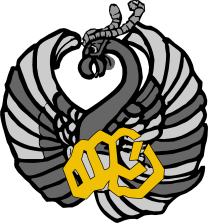Click the links in the list below to find out more about our sport karate and practical self defence curriculum.
NWKA Belt Grading System
Adult Karate Belts and Kyu/Dan Grades
Adult Karate Belts are divided in Kyu/Dan Grades and are achieved through a comprehensive evaluation encompassing a wide range of elements including Kata, Sport Kumite, Self Defence Kumite, Padwork, Takedowns, Escapes, Submissions, and other fundamental aspects of Karate. While belts are not the ultimate goal of Karate, gradings serve as a powerful tool to foster character development by challenging individuals. They instill discipline and enhance resilience.
Children’s Grades
Children’s grades are categorised into Basics, Kata, Sport Kumite, and Padwork. Unlike the Adult Kyu Grades, children are evaluated on a slightly narrower set of criteria. To distinguish these belts, children wear belts with white stripes through the middle. Refer to the conversion chart below for a clearer understanding of the transition from Children’s Belts to Adult Kyu Grades. It’s worth noting that younger students may have the opportunity to transition to the Adult Grades once they participate in more Senior Classes and demonstrate maturity. They will also have the chance to grade for a Children’s Black Belt.
Transitioning from Children’s Belts to Adult Kyu Grades
The chart below outlines how the Children’s Belts convert to the Adult Kyu Grades as students progress to the more Senior Classes. Keep in mind that each child’s journey will be unique, influenced by factors such as age, ability, and training frequency. This approach allows for flexibility on the path to 1st Dan (minimum age 16yrs) and maintains a high standard within the club, leading to the attainment of a prestigious Adult Black Belt 1st Dan.
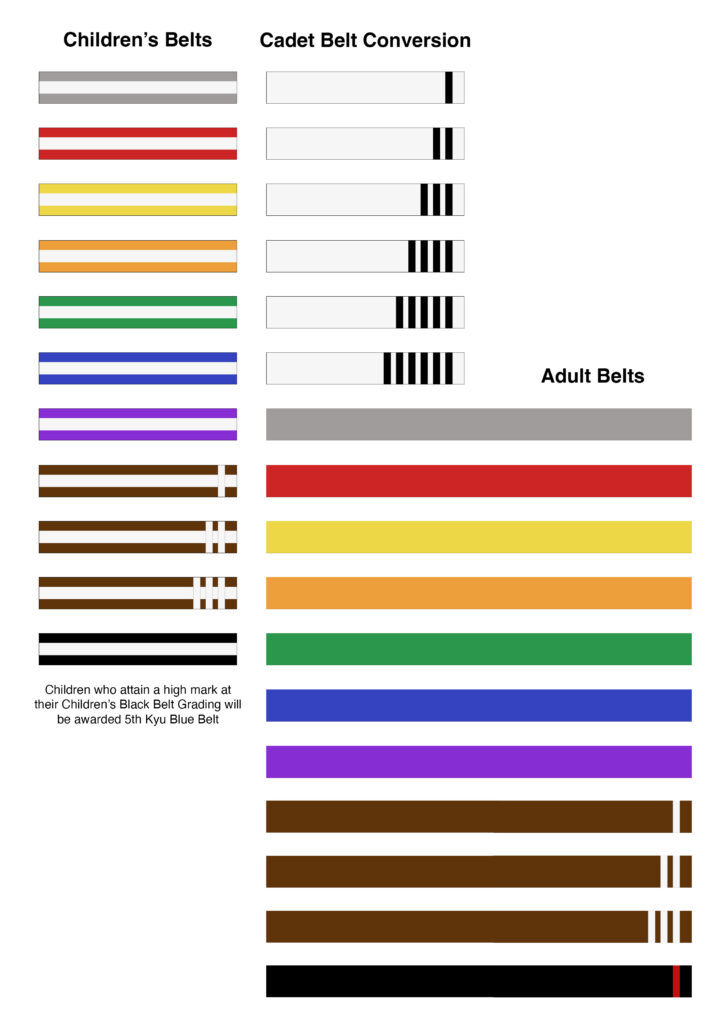
Pad Work
Padwork is an essential part of the NWKA syllabus. It develops body alignment and strength in striking techniques. The Academy teaches techniques from a distance, close quarter and the ground. Techniques we teach include the following categories:
- Punches
- Kicks
- Elbow Strikes
- Knee Strikes
- Closed Hand Strikes
- Open Hand Strikes
Children’s classes are limited to Kicks, Knees, Elbows and a limited amount of Hand Strikes. This is because all out fore-fist punching can be dangerous to growing bones and hand structures.
Training Equipment
At the Academy we use the following training equipment to develop our techniques.
- Strike Shield
- Focus Pads
- Heavy Bags
- Reaction Tubes
- Ground Bags
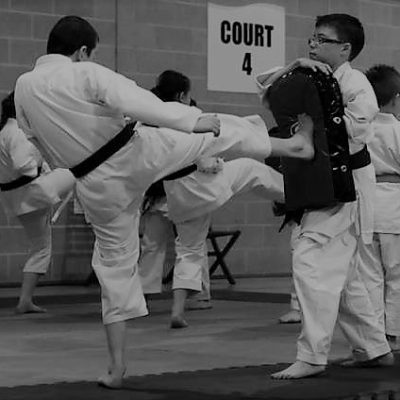
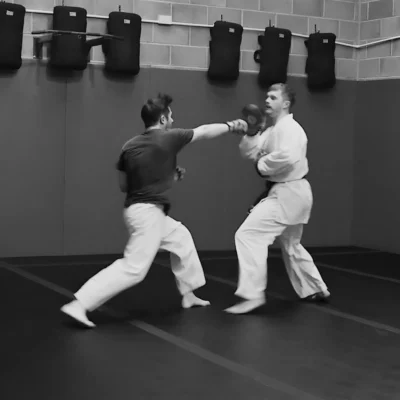
Kumite
Kumite is the sparring aspect of Sport Karate and Reality Based Combat where you can pressure test your techniques. It can be roughly translated to mean “meeting of hands”. Today, Kumite has evolved into a challenging competitive semi contact sport that is safe for children and great fun for all ages. At NWKA, we offer various forms of Kumite, each with distinct objectives related to self-defense and sport. These include standing, clinch, and ground positions.
Sport Kumite (All ages)
Both Adults and Children train in Sport Karate, with the Children’s Kumite syllabus primarily focused on this form of Kumite. The objective is to score a point before your opponent. The point structure for Sports Karate is as follows:
- Yuko (1 point) Is awarded for punches
- Waza-ari (2 points) Is awarded for kicks to the body
- Ippon (3 points) Is awarded for kicks to the head or throwing an opponent to the ground followed by a scoring technique.
These are the current WKF rules (World Karate Federation) that we follow.
Practical Kumite – Free Sparring (Karate Jutsu Adult Classes Only)
Historically in Okinawa, practitioners honed a comprehensive skill set in both striking and grappling techniques across standing, clinch, and ground positions. In our Adult Kumite classes, we emphasise a well rounded approach to this art. Safety is paramount, and we maintain light contact to ensure a secure training environment. Rather than solely aiming to score points like in Sport Karate, our primary objective is to control the opponent. This entails engaging in drills against unskilled opponents who resist, as well as matches where two individuals free sparring to show dominance using a combination of striking and grappling techniques.

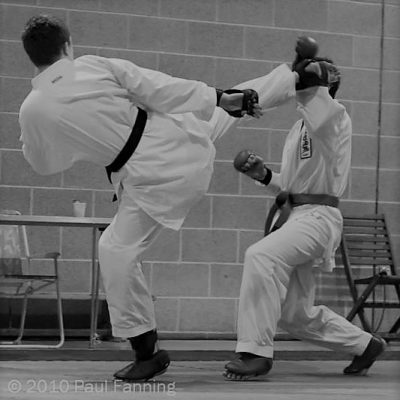
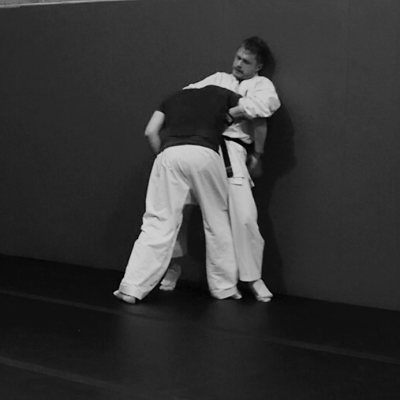
Tegumi (Grappling)
Practiced in our Cadet and Adult Classes
At the Academy, we divide our grappling practices into three main categories: Escapes, Takedowns, and Submissions. Additionally, we emphasize the foundational techniques of clinching and controlling. We train in these techniques separately to striking at first to develop proficiency, later adding strikes. More importantly, we integrate them into Kumite to effectively handle the unpredictability of a resisting opponent. Throughout your training at the academy, you’ll discover the parallels between Tegumi and Kata, and how these practices complement each other.
Why Learn Tegumi? Grappling is a crucial aspect of overall combat proficiency, significantly enhancing self-defense skills. Old school Okinawan masters have attested that the Tegumi of their youth greatly contributed to their Karate practice. Like many cultures, the Okinawan’s developed their own form of wrestling. This led to intense bouts where victory was determined by submission through joint locks, strangles, or pinning.
Progress and Evolution: Today, Tegumi is still practiced in Okinawa. However, it has evolved from its historical origins. It now resembles a more controlled form where opponents engage by gripping each other’s belts and attempting to trip one another. While grappling may not be widely practiced in Karate anymore, our academy embraces it. We can draw upon other grappling arts and blend them together to achieve the same objectives that the old masters originally pursued.
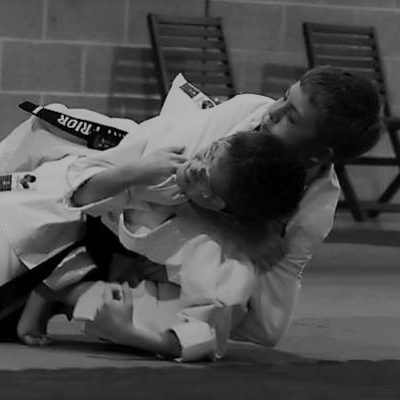
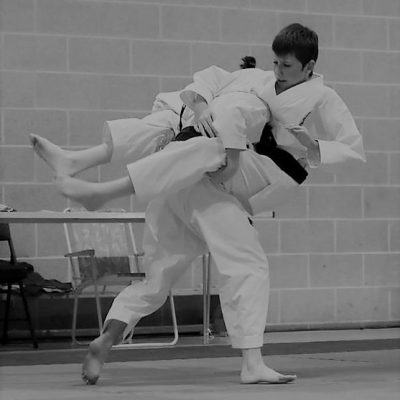
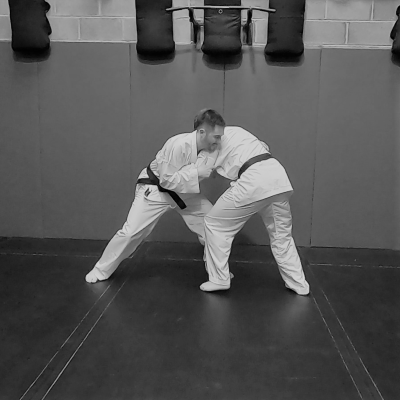
Kata
Sport Kata (All ages)
As a performance sport, it is a great form of physical conditioning and a major discipline within Competitive Karate. It improves balance and co-ordination, speed, strength, focus, timing, body mechanics and technique. It is also great for young children to improve their attention. For students of all ages, contributes to mental discipline, focus, and overall well-being.
There are many ‘styles’ of Kata. To say one ‘style’ is better than the other is ignorant. What separates ‘styles’ is really only aesthetics. Many ‘styles’ have the same Kata in them and the applications are exactly the same. They are all a variation on a common theme. Ultimately at the Academy we don’t deal with ‘styles’ so if you have trained in Karate before, don’t worry about it.
Practical Kata (Adults)
Karate Kata can be divided into two categories of study, these are a ‘Performance Sport’ and ‘Practical Applications’. At the Academy we practice Kata to improve in both, with a stronger emphasis on the Practical Applications for Adult Students. Bunkai is the analysis of Kata Techniques and is one of many tools to remember and pass on practical self defence techniques. The practical applications of Karate are recorded in the Katas in response to the following attacks:- Punches, kicks, knees, elbows, head butts, hand shoves
- Shoulder, hair, lapel and throat grabs
- Bear hugs, full nelsons, guillotines, headlocks and neck chokes
- Tackles, attacks on the floor and being mounted
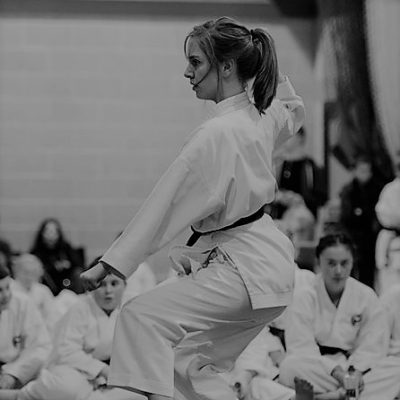
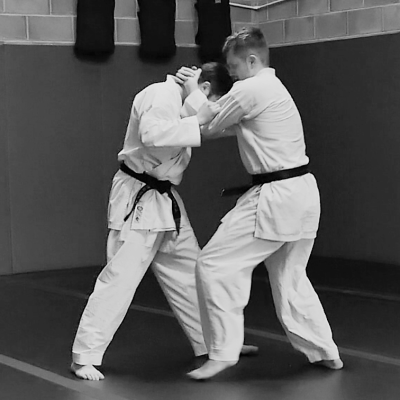
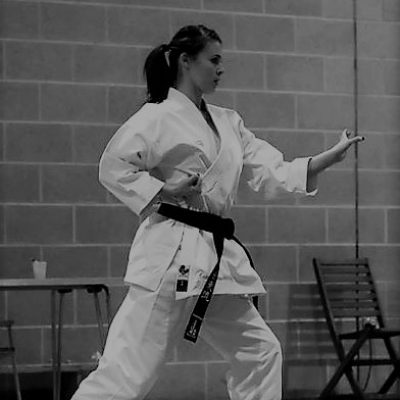
Contact
Feel free to reach out with any questions or to schedule your first class. We’re here to support you on your Karate journey.
We look forward to hearing from you.
Contact Steve
For clubs in Newton-le-Willows and St Helens
Email:
[email protected]
Contact Carl
For clubs in Cronton, Brookvale, Whittle Hall, Hood Manor
Email:
[email protected]
